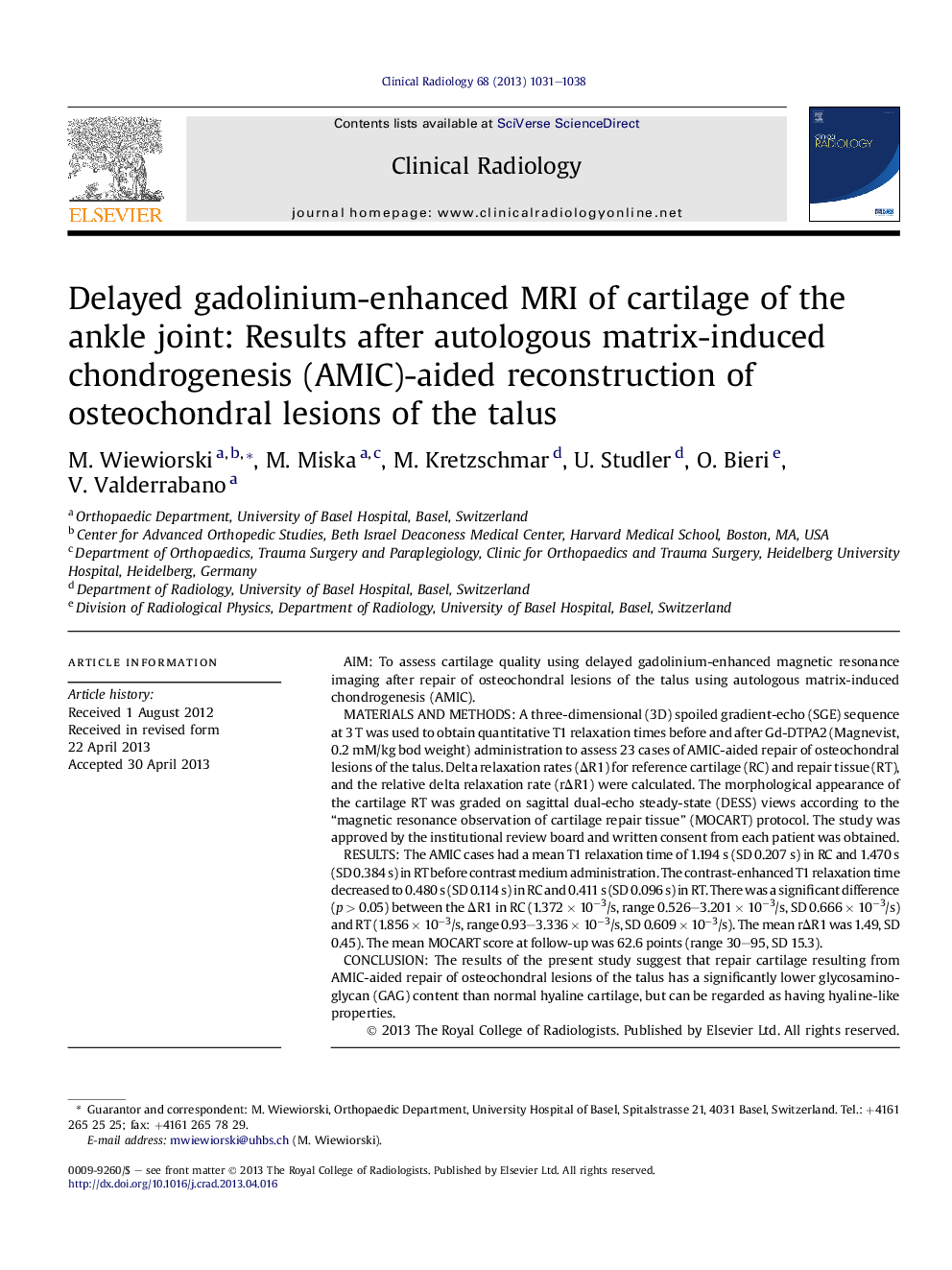| Article ID | Journal | Published Year | Pages | File Type |
|---|---|---|---|---|
| 3982455 | Clinical Radiology | 2013 | 8 Pages |
AimTo assess cartilage quality using delayed gadolinium-enhanced magnetic resonance imaging after repair of osteochondral lesions of the talus using autologous matrix-induced chondrogenesis (AMIC).Materials and methodsA three-dimensional (3D) spoiled gradient-echo (SGE) sequence at 3 T was used to obtain quantitative T1 relaxation times before and after Gd-DTPA2 (Magnevist, 0.2 mM/kg bod weight) administration to assess 23 cases of AMIC-aided repair of osteochondral lesions of the talus. Delta relaxation rates (ΔR1) for reference cartilage (RC) and repair tissue (RT), and the relative delta relaxation rate (rΔR1) were calculated. The morphological appearance of the cartilage RT was graded on sagittal dual-echo steady-state (DESS) views according to the “magnetic resonance observation of cartilage repair tissue” (MOCART) protocol. The study was approved by the institutional review board and written consent from each patient was obtained.ResultsThe AMIC cases had a mean T1 relaxation time of 1.194 s (SD 0.207 s) in RC and 1.470 s (SD 0.384 s) in RT before contrast medium administration. The contrast-enhanced T1 relaxation time decreased to 0.480 s (SD 0.114 s) in RC and 0.411 s (SD 0.096 s) in RT. There was a significant difference (p > 0.05) between the ΔR1 in RC (1.372 × 10−3/s, range 0.526–3.201 × 10−3/s, SD 0.666 × 10−3/s) and RT (1.856 × 10−3/s, range 0.93–3.336 × 10−3/s, SD 0.609 × 10−3/s). The mean rΔR1 was 1.49, SD 0.45). The mean MOCART score at follow-up was 62.6 points (range 30–95, SD 15.3).ConclusionThe results of the present study suggest that repair cartilage resulting from AMIC-aided repair of osteochondral lesions of the talus has a significantly lower glycosaminoglycan (GAG) content than normal hyaline cartilage, but can be regarded as having hyaline-like properties.
